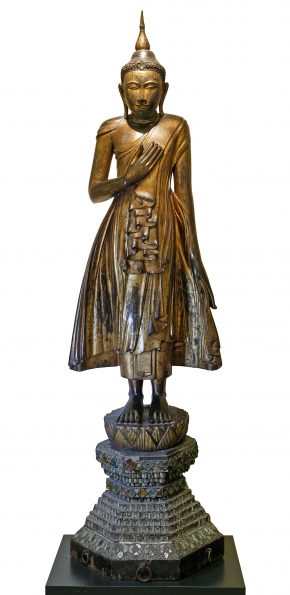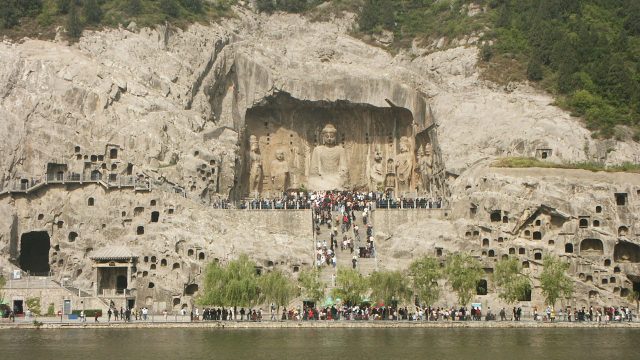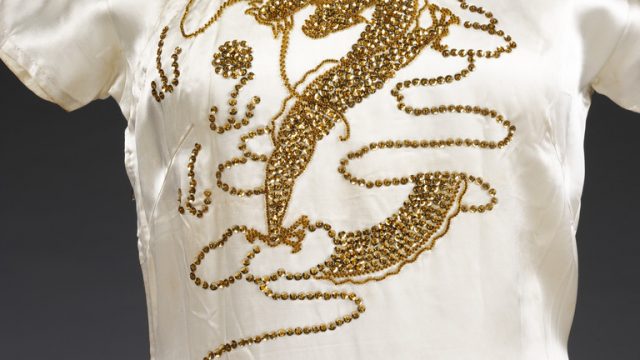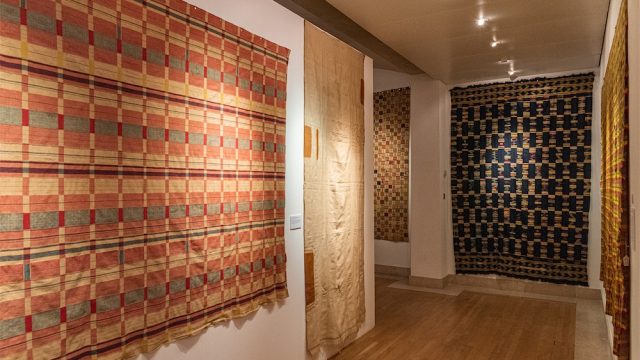Sometimes the disruption caused by building work within a museum such as the V&A can bring new opportunities. This is proving the case with The Robert H.N. Ho Family Foundation Gallery of Buddhist Sculpture which closed in late 2013 to allow building work to commence on a major new temporary exhibition space close by. The old gallery (Rooms 17-20) had to be dismantled and the objects removed and safely stored to safeguard them from the effects of vibration and dust.
Since then plans for a new gallery have been developed and the first part of this (Gallery 47f) will open on August 3rd, 2015. At present this space is occupied by Chinese export art, but these pieces are due to be removed and placed elsewhere in the museum or in some cases stored.
This first room to open is next to the V&A’s three main East Asian Galleries and Buddhism as a theme is therefore highly appropriate to them all.

This has given me a chance to think freshly about how Buddhist art might be displayed in new ways. The previous gallery was based on geographical and historical groupings combined with religious ones. This meant that everything from Southeast Asia was displayed together in one room and related to the Buddhism of the region (Vajrayana and Theravada), everything from East Asia in another room (related to Mahayana in its various forms) and so on.
But the new gallery of which 47f is part one, will be grouped more thematically by type of image. This grouping relates to the over-arching concept shaping the whole scheme which is how physical icons represent the spiritual goal of the religion and the Buddhist path itself. They may all be seen as embodiment’s of the enlightened state. Thus one room (18) will display together Bodhisattva images representing the Mahayana concept of the path of compassion while another room (17) will show Tantric sculptures revealing the Buddhist yogic path to enlightenment.
The unifying theme of Gallery 47f is the image of the Buddha Shakyamuni, the primary and enduring representation of the founder of the religion and embodiment of the awakened state. Both standing and seated forms of the Buddha are shown as it developed in India and moved across Asia.The new room will combine Buddha images from India with those from Southeast and East Asia.
By grouping the Indian pieces together within the room a visitor will hopefully understand how the Buddha image developed within its homeland from its beginnings in the 1st century AD. But these sculptures will also be placed near the ones they inspired from the rest of Asia and there will be some interesting direct juxtapositions. A terracotta Buddha from Pakistan of the 6th century AD, for example, will be placed next to a 6th century stone Buddha from the cave temples at Xiangtshang in China. The style of these figures is very close and I think this is visually obvious even were there to be no labels (which there will be). This very much underlines the connections that existed through the routes across central Asia between India and China in first millenium.
The new gallery, when installed in its entirety, will be larger in extent than the old one and will include several new objects. Among them are two paintings (see below) not seen previously and other objects that have been off display for some time such as an 18th century life-sized, standing teak Buddha from Myanmar (pictured above). A large painted metal Buddha head from China of the Ming Dynasty (1368-1644) will be re-displayed in a new case. Among the great treasures of the V&A’s is a rare survivor from the royal palace of Mandalay, a complex sadly burnt down in the Second World War. This wood and lacquer Buddha shrine will be on show again but this time in a non-reflective glass case. Anyone who has visited the V&A’s Sacred Silver Gallery will know this type of glass makes a huge difference to the visibility of objects.
Unlike the previous gallery location this new area is not brightly lit by direct daylight and this allows for the inclusion of two paintings. These are mid to late 19th century Thai paintings, in long banner format, around 9 feet long. They would originally have hung in the building housing Buddha images (bot) in a Thai monastery. One of these, showing the Buddha and his two chief disciples, was last on display in 2008, the other has not been on show before and depicts the famous scene when the Buddha descended from the Heaven of the Thirty-Three Gods after preaching to his mother there. That paintings and not solely sculpture are included in the gallery is acknowledged in the name of the new gallery, The Robert H.N. Ho Family Foundation Galleries of Buddhist Art.
At the moment the preparations include planning for the making of new cases and plinths where necessary and for the conservation and transport of pieces. On April 27th the room will be closed so that the Chinese export objects can be removed and the cases and plinths installed. From mid June to July objects will be installed by the museum technicians. Many of these are large and delicate and their handling expertise is essential in the process.
The next part of the gallery will open in 2017, after the opening of the new exhibition space. In this one room (Room 20) will focus on the life of the Buddha and on pilgrimage to the four main life sites. Room 18 will display Bodhisattvas and Guardians of the Mahayana and Room 17 will show Tantric figures and wrathful Guardians of the Vajrayana.




Hello John, I am a volunteer guide at the V&A and have met you at SOAS on the Post-Graduate Diploma course when you came to lecture us. I am currently preparing a tour for 2017 when the two additional Buddhist galleries open. Can you indicate what sculpture will be going into Room 17 – “Tantric figures and wrathful Guardians” so as I can progress my research?
We are coming to the V&A next Saturday 19 March 2022. Is there a more up-to-date description of the contents of the Buddhist galleries now that, presumably, the restructuring has been completed, please? My understanding is that we will have to buy tickets in advance of our visit, so we are in the process of planning our visit.